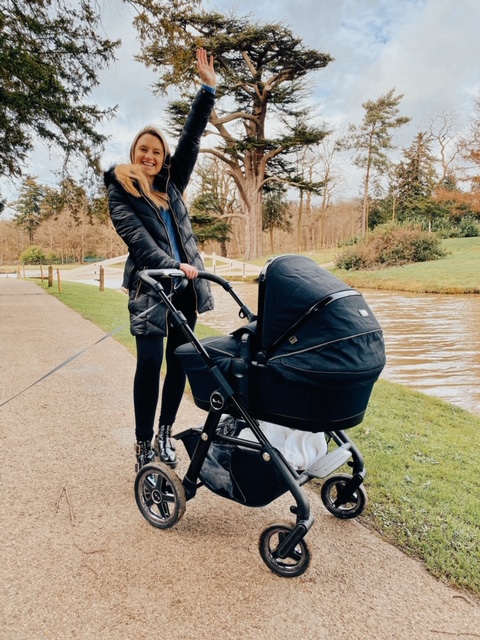GUEST POST ON POST NATAL RECOVERY BY CLARE BOURNE
I’m Clare Bourne, a pelvic health physiotherapist and a mum of 2 to a 3 year old and 6 month old. As a pelvic health physiotherapist I look after women and men throughout their lives with conditions that impact the pelvic floor and abdominal muscles. I am particularly passionate about supporting women during pregnancy and the postnatal period in their recovery, especially since living it myself. I have worked in the NHS before moving into private practice at Six Physio in London.
During pregnancy lots of changes happen to our body – the most talked about being our pelvic floor and tummy (diastasis recti). It is absolutely amazing how our body grows a new human being, and it has to adapt in order to do this. Often during pregnancy we can feel amazed by our body, and celebrate all it is doing and our lovely bump. However, once our baby arrives the body we are left with can seem less desirable and not so easy to celebrate. When it comes to postnatal recovery it is so important to understand how best to support ourselves. Our bodies don’t just bounce back to where they were, despite what it may sometimes look like on social media. There is nothing wrong with having aesthetic goals, but we just need to make sure we care for our physical and mental health along the way. I going to share with you some top tips for caring for yourself after both vaginal delivery and caesarean section, an overview of pelvic floor exercises and diastasis recti and my top tips for returning to exercise.
Top tips for after caesarean section:
- MOVEMENT: gentle movement and walking will often be encouraged by your medical team on the day of you delivery depending on what time your birth is. As the days and weeks go on you will feel more confident to walk further distances but take it steady and do listen to how your body is feeling. It is likely to tell you if you have done too much. Taking it easy is easier said than done with a newborn.
- SCAR CARE: in the early days supporting the scar with a towel or blanket can help the discomfort of coughing, sneezing or laughing. Keeping it dry and allowing air to it is helpful for the healing process. You can shower without concern but just dab the area dry to comfort. After 6 weeks doing scar massage is really beneficial as it helps with the sensation of the area, including helping areas of numbness, managing swelling, reducing muscle restriction caused by the scar, reducing the feeling of tugging that can occur, helping with the overhang appearance and helping you to reconnect with your body. It can sometimes be really emotive, especially if your birth was traumatic so please do access support if this is the case for you. Check out the highlights section of my instagram page for videos that will guide you through.
- BOWEL HEALTH: trapped wind can be more painful than the scar itself – movement and peppermint tea can help. Make sure you don’t put off that urge to go to the toilet and you can support your scar for comfort.
- LIFTING: the advice in the early weeks is to not lift anything heavier than your baby, which is not always easy, but does help you to gauge what you should be aiming for.
- DRIVING: check with your insurance company but usually the advice is returning from 4-6 weeks when you need to be comfortable to do an emergency stop and wear the seatbelt comfortably.
Top tips after vaginal delivery:
- SITTING: roll up two towels and place them on a chair or sofa under your thighs so your perineum, where you are likely to have some stitches, is not in contact with the chair. This takes the pressure of any wound you may have and helps with comfort, especially during long feeding sessions.
- ICE: creating a padsicle can really help with swelling and discomfort in the early days. Get a clean sanitary pad, wet with water and freeze it. Wrap it in an old flannel and pop it over the perineum for 5-10 mins max at a time. You can try this every few hours to help with discomfort, but be sure not to leave on too long.
- MOVEMENT: little and often is often best. Long walks in the early weeks can aggravate any wound that is healing and increase swelling, so gradually build up even if you feel great.
- BLADDER & BOWELS: doing your first wee and poo can be terrifying, so much so that I have dedicated separate posts to them on instagram with my top tips. For your first wee take a squirty bottle of water and use it to help flush the area straight away. With your bowels, make sure you don’t strain and lift your feet up onto a little stool and lean your body forwards. You can hold a pad over any stitches to provide support.
- CLEANING: just use water to clean the area and don’t use scented products. Dab the area dry with a towel and change your maternity pads regularly.
Pelvic Floor Health
Pelvic floor exercises are for everyone, throughout life, however they become really important during pregnancy and after birth. This is because during pregnancy they lengthen and weaken, so however you give birth they are a vital part of recovery. The pelvic floor muscles sit at the base of the pelvis and have a number of key jobs. They help to keep us continent of urine and faeces, they support our pelvic organs, they support the bones of the pelvis and spine along with other muscles of the core and contribute to sexual pleasure. The best way to contract the muscles is to think about holding in wind….simple right?! However, we think from research that around 50% of us are doing them wrong. It is not always easy to find the right contraction so don’t worry if you are struggling. Something to note is that you shouldn’t be using your legs, bottom or tummy muscles as well. Letting go of the muscles is just as important as the squeeze so make sure you feel a complete relax between with a nice deep breath.
There are two types that we should be doing, quick where you simply contract and let go, and slow where you hold the contraction for up to 10 seconds (whilst breathing) before letting go. During pregnancy, the early postnatal period and when symptomatic of any incontinence or prolapse (heaviness or dragging sensation) we would advise 10 of each type, 3 times a day. A great time is when feeding your baby as you are doing this a lot in the early days and weeks. You can start these on the day you give birth once you have done your first wee….but they won’t be top of the list unlike sleep and staring at your new babe.
Diastasis Recti
This is the natural separation of the 6 pack muscles in the tummy as your baby and bump grows. It is understood to be present in 100% of women by 35 weeks so it isn’t something that we can avoid, anything you have done wrong or anything to be feared. After birth there is a natural recovery, however it is thought around 1/3 of women will have ongoing separation and require support in their rehabilitation, ideally from a pelvic health physiotherapist. Diastasis is not the only reason that your tummy can still look more round for months after you have given birth. Your tummy muscles also stretch, lengthen and weaken and this contributes to this ongoing shape. Therefore it is important for us to use our tummy muscles in the postpartum period just being mindful of diastasis and a graded approach back to exercise. On my IGTV I have a video showing you how you check your own tummy.

Top tips for returning to exercise:
- It is a personal journey and there is no one size fits all
- Focus on the foundations – pelvic floor, deep abdominals and build from there
- Work on functional movements like squats and lunges that you are doing all the time in mum life
- Build exercise into your every day mum activities, like squats with the buggy
- Slow and steady really does win the race
- Returning to running is generally advised at the earliest 3 months postpartum to allow yourself the chance to rehabilitate and when you do return to follow a walk/run programme.
- Exercise should not cause symptoms of incontinence or prolapse (heaviness or dragging within the vagina) so if this is occurring please do seek help and support
- Focus on building strength for motherhood
Your body has changed, but that doesn’t mean you have to stop doing the things you love or do them with symptoms you wish you didn’t have. Accessing help is not always easy but it is out there. You can discuss your symptoms with your GP and see if they will refer you to pelvic health physiotherapy, or you can find one privately via The Squeezy App Directory online. Either way, don’t suffer in silence.
For more information on all these topics come and follow me on instagram @clarebournephysio.


